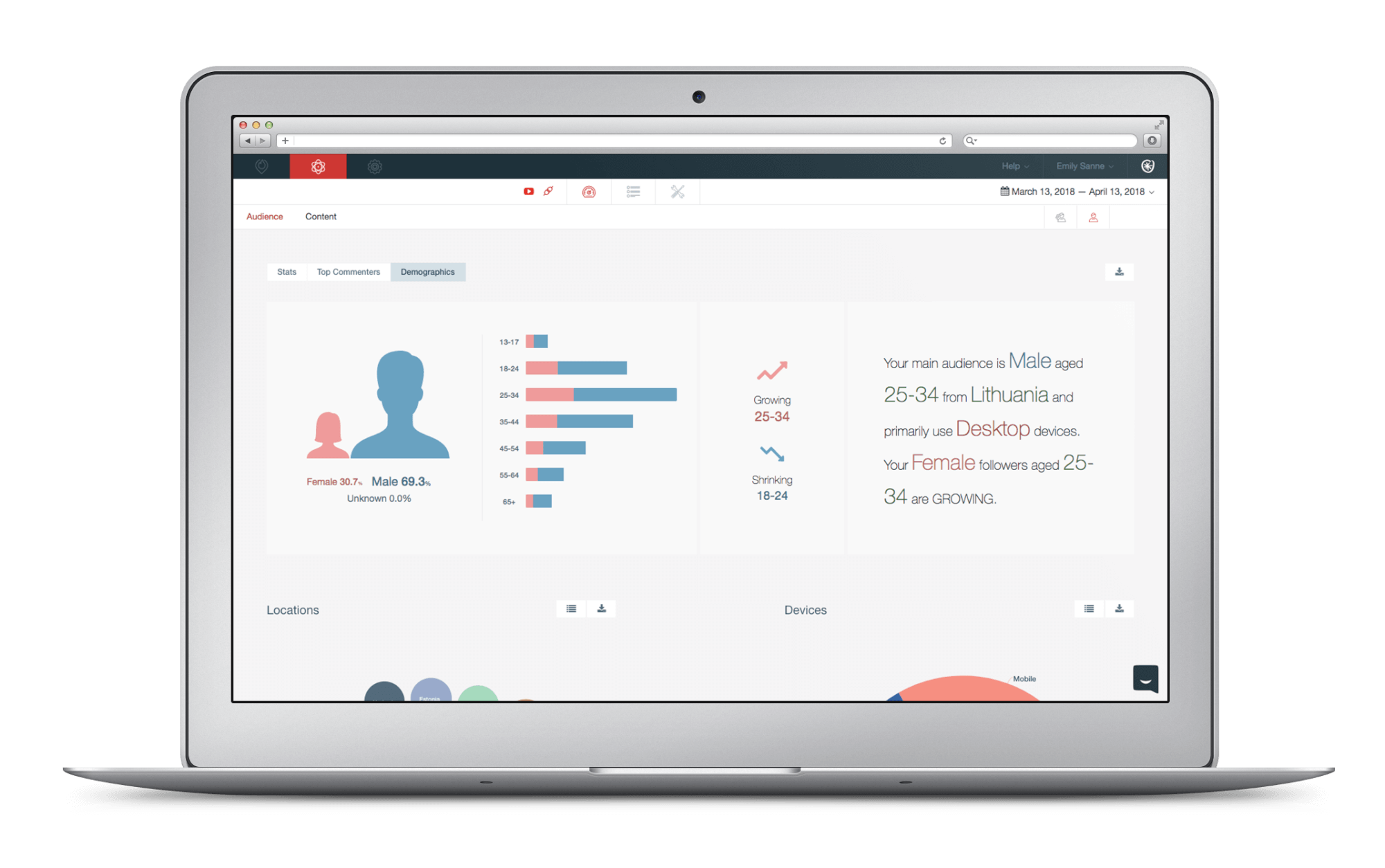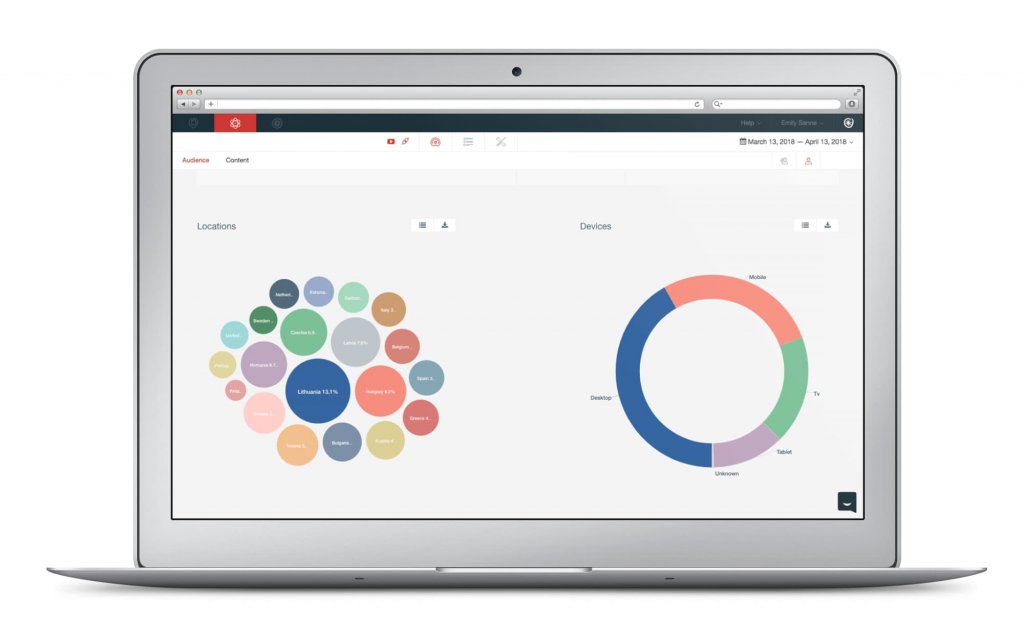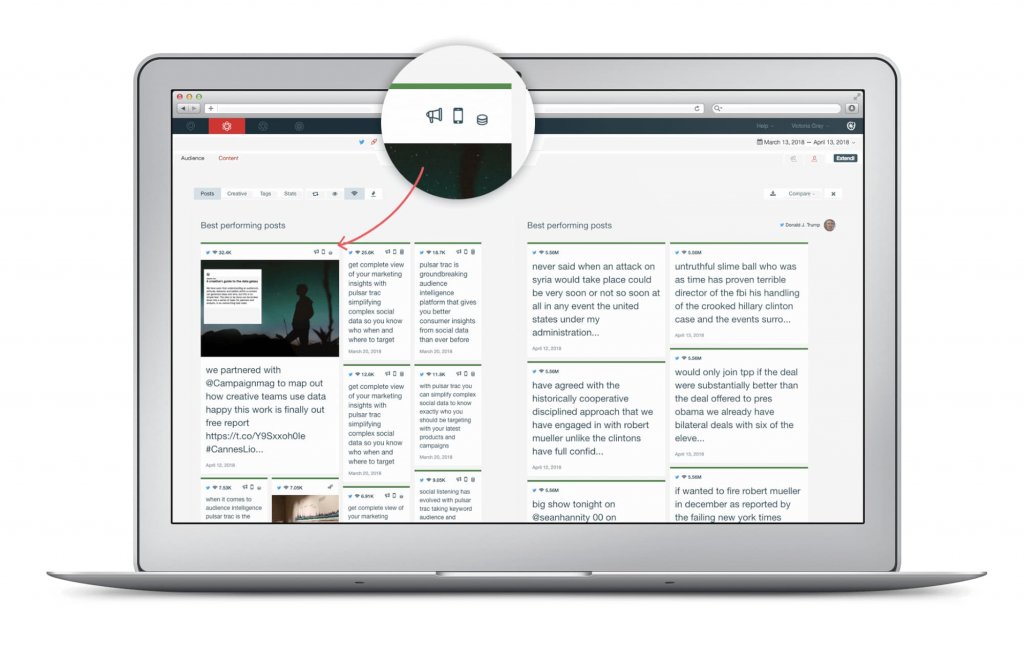Pulsar CORE’s new advanced social media analytics and insights
We have recently given Pulsar CORE a revamp, following the introduction of owned-channel insights. Pulsar CORE’s owned insights now include a whole host of new metrics and data analysis to allow you to better understand your audience and the impact of your content. By being able to plug in your owned channels you can receive more advanced social media analytics and insights.
‘But what can we do with this?’, we hear you cry. Through the new advanced social media analytics, you can now analyze your followers with the new demographics tab and see who the top commenters are, whether they follow you or not. Track how your organic and promoted posts are performing and how users are seeing your content. You can also understand how your brand is measuring up against your competitors to see who is coming out on top.
Here’s an example user journey, showing how you can use the new CORE owned-channel insights for your business. Say you were a drinks brand looking to grow the following of your new gin…
Using Audience Insights for social media analytics:
In the new demographics tab, you can understand your followers on each of the different social channels you can connect to Pulsar CORE: Twitter, Facebook, Instagram and YouTube. Each metric is slightly different Pulsar pulls data directly from the public APIs of channels. You will be able to see gender and age splits, country locations, and which devices audiences use to access your channels, as well as which demographics are growing and reducing. This is particularly useful if you’re trying to appeal to a particular group of people, trying to tailor content to particular locations or ensuring content is designed best for the UX of one device.

The gin brand might be looking to talk to women aged 25-34 in the UK, and can easily see if that audience is engaged with the content, and if people outside the UK are also engaged with their channels, whether they should create localised content or a separate account for those international fans.

Using Content Performance Insights:
Once you have established which audience your content strategy is appealing to, it’s time to get more granular with analysis of your content: find out what to change, or what to do more of. Through more advanced social media analytics, using the content tab on Pulsar CORE, you can examine a breakdown of your posts, which now includes indications of whether the post was organic or paid, how much was spent on it and which devices gave most impressions to the post as well as video views, if relevant.

For our gin brand, they can follow paid campaigns they’re doing and measure success and value for money, or analyze why a particular post went viral – perhaps an organic picture of the beautiful gin bottle was more effective than a paid post describing a cocktail recipe.
You can now compare the information from the content tab to another account, to get a measure against a similar brand, or find out how a competitor is succeeding. The gin company might want to compare to a more established competitor to get a feel for how the gin industry, in general, is talking, and what is resonating with their audience while planning out their new strategy.
Finally, the content tab lets you analyze your stats, giving a graph view of the impact of posts, showing reach, engagement – including micro-engagements like clicks on a post, and video views – and comparing to an industry benchmark within your brand set. This is helpful for monitoring the ongoing strategy success, and for reporting. Our gin brand can now go forth with its brand new social strategy and set up an ongoing content plan that they report back on monthly.


